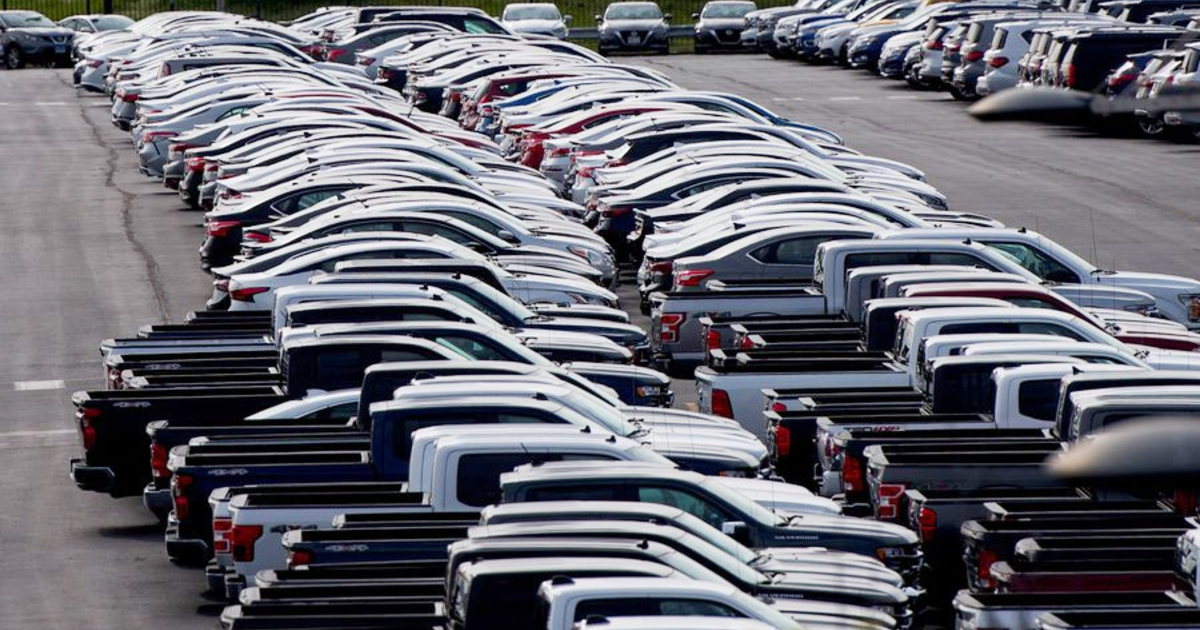
It doesn’t take advanced knowledge of Newtonian physics to understand the forces at play right now in the U.S. auto market.
But it helps.
Consider Newton’s Third Law of Motion. “For every action, there is an equal and opposite reaction.”
That played out in September — and indeed throughout the third quarter — across the U.S. auto industry as automakers and dealers struggled to find a balance between opposing forces. Continuing production and logistical bottlenecks at some automakers kept inventory from recovering more quickly; rapidly rising interest rates and prices squared off against consumers’ concerns about their ability to pay.
The result: The seasonally adjusted, annualized rate came in at 13.67 million last month, Motor Intelligence said, above analysts’ projections and much improved from the 12.38 million in September 2021, the lowest pace of sales since the early months of the COVID-19 pandemic. September 2021 was the worst post-lockdown month of 2021, LMC Automotive said.
Automakers posted a mishmash of results for the month and the quarter, many keyed most simply on whether dealers had inventory available to sell.
For the third quarter, a handful of major automakers posted gains, including General Motors’ 25 percent jump and Ford Motor Co.’s 16 percent rise, both driven largely by improved inventory conditions compared with a year earlier. On the other side of the ledger, American Honda saw its sales shrink by 36 percent and Toyota Motor North America suffered a 7.1 percent decline during the three-month period, largely attributable to supply constraints.
“Supply is still wagging the dog here,” said Jeff Schuster, president, Americas operation and global vehicle forecasting at LMC Automotive, “but I think we’re starting to see that turn as well.” September was “full of noise” across automakers depending on the success they had getting vehicles from the factory to dealership lots, the longtime industry analyst said.
“On an industry level, you are seeing an improvement in inventory, but it’s not across all brands, and at the same time, there is a pullback starting on the demand side. Rising interest rates have pushed a lot of consumers right out of the new-car market, so you have these competing issues on the supply and demand side that are altering the outlook going into next year,” Schuster said.
LMC this week trimmed its 2022 sales outlook by 75,000 units to 13.7 million light vehicles, which would be a decline of 9 percent from 2021, and cut its 2023 forecast by 100,000 units to 15.3 million.
There are some signs of hope on the production side. North American vehicle production jumped 23 percent in August to 1.39 million, according to the Automotive News Research & Data Center. Through eight months of 2022, assembly plant output is up 10 percent to 9.76 million.
Cox Automotive Chief Economist Jonathon Smoke sees some irony for the industry’s macroeconomic picture.
“Just as the industry is poised to start seeing volumes increase from supply-constrained recession-like low levels, the rapid movement in interest rates is reducing demand,” Smoke wrote in an Oct. 5 blog post that took issue with the Federal Reserve’s aggressive interest rate moves. “New cars may finally become more available just when most Americans can no longer afford them, and that does not bode well for a supplier base already on the ropes from three years of low new-vehicle sales.”
Toyota is a prime example of the struggle and churn taking place across much of the industry. Its inventory situation has improved from earlier this year, when executives said its days’ supply on dealership lots started to be measured in hours. In September, the Japanese automaker’s sales shot up 17 percent over the previous year — its first increase in 13 months. But even that gain wasn’t all that it appeared, Toyota brand head David Christ told Automotive News.
“We lost some ground in August because of railcar availability and our overall ability to get the cars to the dealerships, and we made that up in September,” Christ explained. “So we kind of just pushed it from one month to the next, and we think kind of that same vibe is going to happen for the rest of the year.”
Toyota’s third-quarter slide means that last year’s first-time U.S. sales champion now trails previous perennial sales crown holder GM by 67,877 vehicles heading into the crucial fourth quarter.
While some analysts see a bleak end of 2022 because of all the competing forces playing out in the market, Tyson Jominy, vice president of data and analytics at J.D. Power, said the sky is not falling for dealers or automakers in large part because of their ongoing inventory situations.
“It’s not to say everything is great or getting better, but retail demand is still robust,” Jominy told Automotive News, adding that midsummer, unmet demand peaked at about 5.5 million vehicles. “That’s more than adequate to carry us forward. Interest rates, inflation and fuel prices are destroying demand in an absolute sense, but there are still people and fleets who are desperate to get new vehicles.”
Jominy said wholesale prices for used vehicles will continue to come down from near-record levels, and some price-conscious consumers will find themselves locked out of the new-car market by interest rates, but there is enough unmet demand in the marketplace to cushion all but the most dramatic economic blows.
“Things could change, obviously, but nothing is really standing out as a red flag,” Jominy said. “What we all kind of want is that soft landing that’s so popular in economics, and the metrics are pointing more toward a soft landing than a hard landing.”